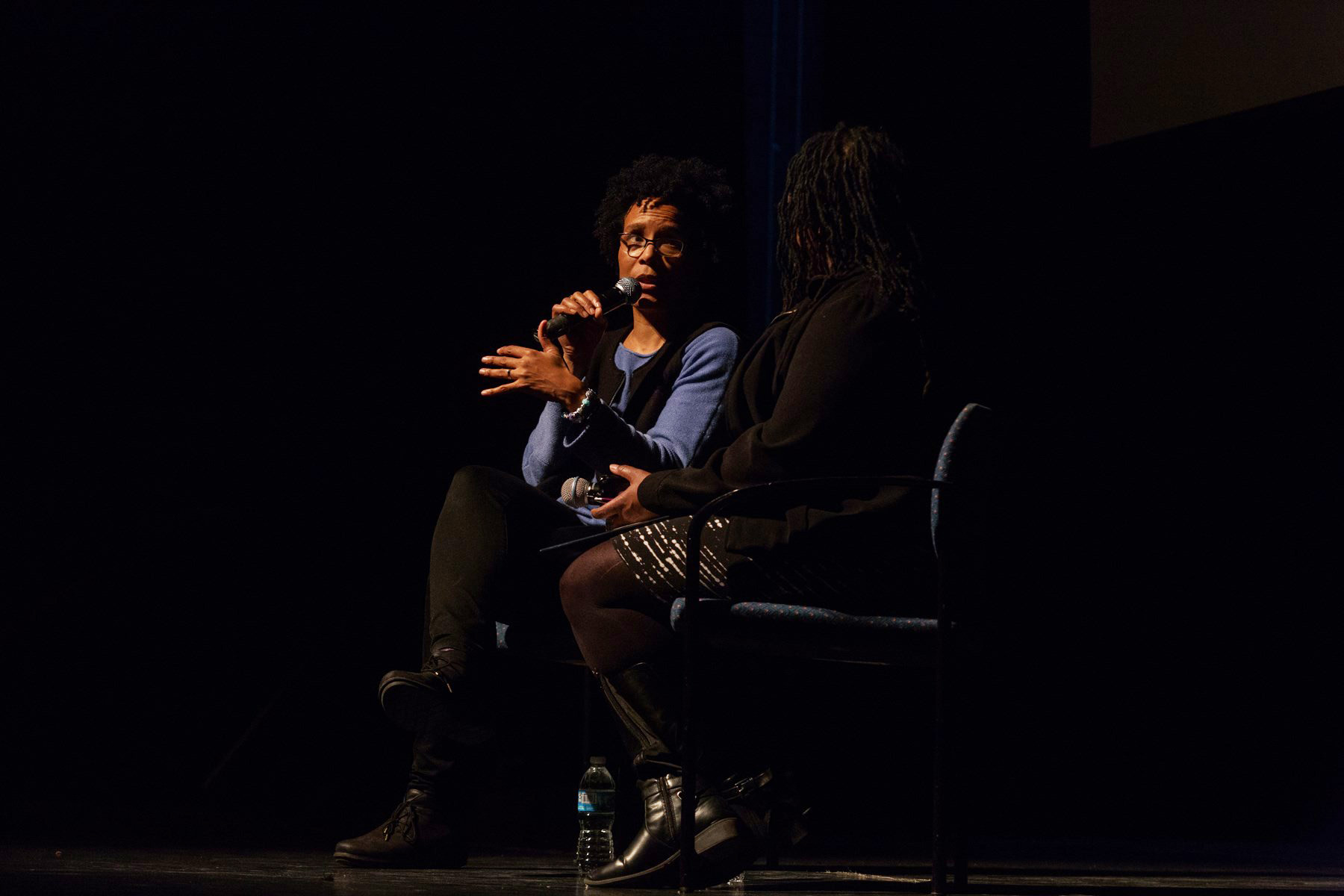In May of 1937, eight-year-old Lorraine Hansberry moved with her family to a home in the all-white neighborhood of what is now West Woodlawn, in an act that helped fight a racially segregated housing system in Chicago. Two weeks ago, a crowd of over one hundred convened just a twenty-minute walk away from that same childhood home to watch Sighted Eyes / Feeling Heart, a new documentary honoring Hansberry’s life as both a playwright and activist.
The film’s writer and director, Tracy Heather Strain, described the importance of telling Hansberry’s story to the audience at the DuSable Museum of African American History: “I was really conscious of the fact that people only know A Raisin in the Sun, and I thought her whole life was interesting and of value. You think of someone at the age of twenty-eight who wrote this play that is adored and you think, ‘How did that happen? Who was this person?’”
Sighted Eyes answers these questions by beginning with Hansberry’s South Side roots.
Born at Provident Hospital in Washington Park in 1930, Lorraine Hansberry grew up in a middle-class family. The film explains that despite the professional success of her father, Hansberry’s family was relegated to living in the less affluent “Black Belt” of Chicago due to racially restrictive housing covenants, formal deals in which real estate agents agreed not to sell property in white neighborhoods to African Americans.
When the Hansberry family managed to purchase a Woodlawn home in 1937, they were met with hostility. Sighted Eyes recounts how young Hansberry was “spat at, cursed, and pummeled in the daily trek to and from school.” The film also features an interview with her sister Mamie, who describes when a piece of mortar was thrown through the Hansberrys’ front window and nearly hit Hansberry’s head.
According to Strain, the Hansberry family had known that they risked facing this type of racial violence in their efforts to defy the housing covenant system. “The fact that they moved their family to the house where Lorraine was attacked was part of a test,” she said.
Thankfully, it was a test that paid off. In the Hansberry v. Lee case of 1940, the U.S. Supreme Court ruled in favor of the Hansberrys, which allowed them to remain in their Woodlawn home. While the case won on a technicality, it opened up thirty blocks of South Side property to African Americans, making it a milestone in the efforts towards ending legally-enforced housing segregation.
Strain surmised that the success of this case was instrumental in shaping Hansberry’s life trajectory. “It seems like she was a deeply feeling person even as a child. I feel like she was a trained activist,” she said.
Sighted Eyes / Feeling Heart showcases the ways Hansberry used that training in activism to enact change up until her death in 1965. From creating plays that brought authentic Black narratives to Broadway, to writing for the first national lesbian magazine The Ladder, to speaking at rallies and delivering keynote addresses for the civil rights movement, the film documents how Hansberry used her skillful control over the English language to fight the many forms of oppression she observed in American society.
Describing her experience seeing Hansberry’s play To Be Young, Gifted, and Black at the age of seventeen, Strain reminisced about how impactful Hansberry’s passion for social justice was. “I was thunderstruck,” she said. “I had never heard someone represent experiences that I had had. She talked about race, class, gender, and I had never known a young person that was speaking in those ways that I just thought in my head.”
With the making of Sighted Eyes, Strain set out with the goal of producing a film that similarly moved people. “When making media about things, you want to do something with it, don’t you?”
So far, Strain seems to have been successful in that goal. As Willa Taylor, Director of Education and Engagement at the Goodman Theatre, personally thanked Strain from the stage after the screening was finished, the crowd at DuSable gave a standing ovation for the film.
For Strain, seeing such reactions to her work has been validating. “I’ve had the good fortune of talking to audiences after films screenings and I have been really pleased because in the same way To Be Young, Gifted, and Black hit me and introduced me to Lorraine Hansberry, I was really pleased that for some people our documentary has had that same kind of effect, and that they feel inspired by the story”.
Though the Sighted Eyes serves as the culmination of over fourteen years of work for Strain, she hopes that it is only a starting point for what is to come. “I’ve always thought of this as a transmedia project,” she said. “One of the things we’d like to do is create a graphic novel for kids to learn about Lorraine Hansberry’s life. We want to do an exhibit about Black theater before A Raisin in the Sun because we also did a lot of Black theater history research.”
“Everybody we interviewed shared something that I think the world should hear, especially some of the African American interviewees who were telling some of their own stories along with their remembrances of Lorraine Hansberry,” she added.
While the world only had Lorraine Hansberry for thirty-four years, Tracy Heather Strain’s Sighted Eyes / Feeling Heart serves as a testament to the inspirational quality of Hansberry’s life and work, showing the importance of appreciating her for more than just A Raisin in the Sun.
Support community journalism by donating to South Side Weekly

